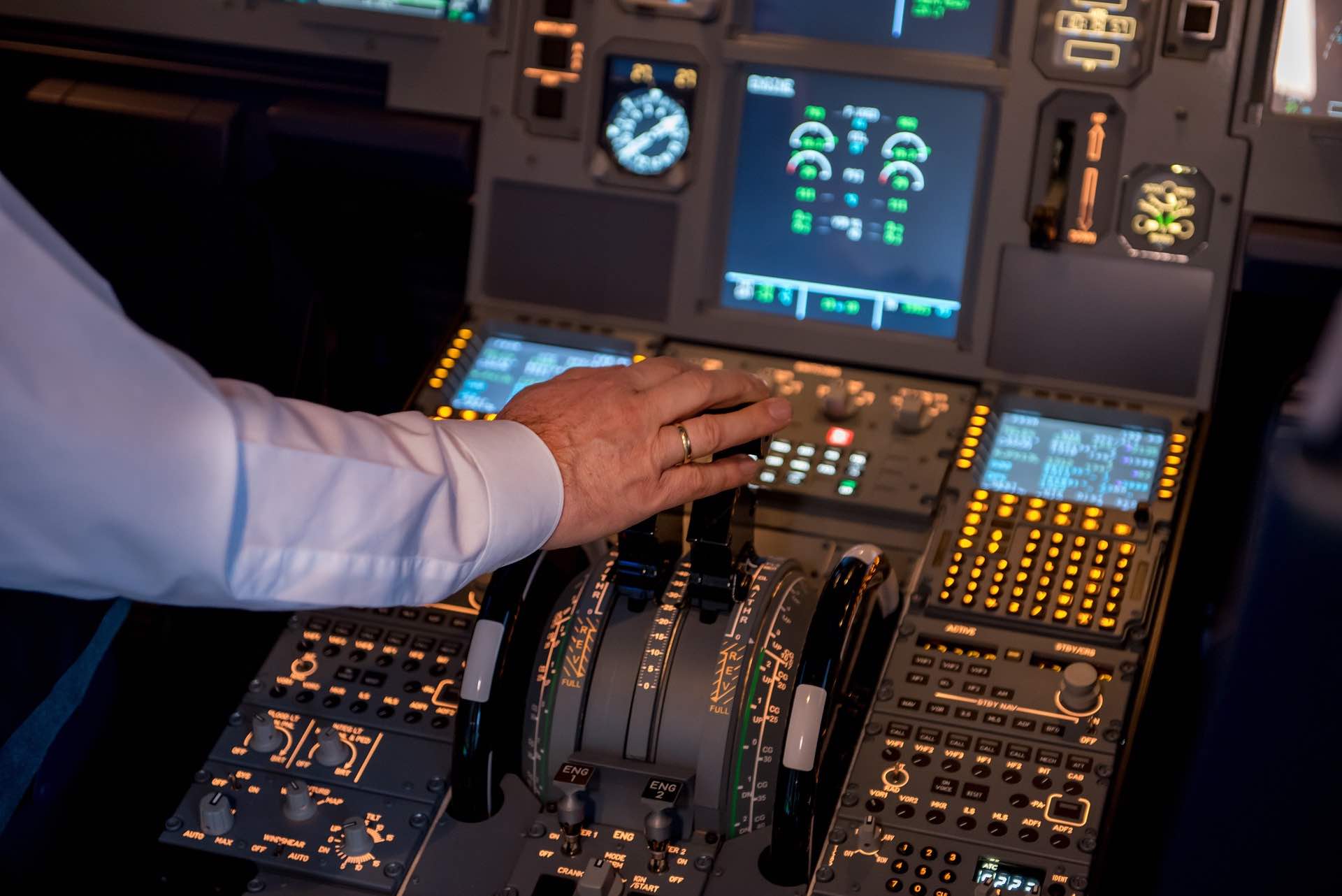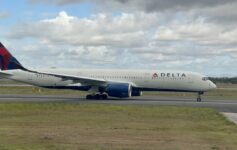
Let me start with a confession. I’m bad with names. Utterly terrible. Odds are that five minutes after meeting a new first officer I’ve forgotten their name already. I can remember a lot of other details without issue, but names are a real challenge. Now something I’m usually good at is recounting and remembering details of aircraft accidents and incidents. I was at the Udvar Hazy facility once near the Concorde and a group on a tour was asking the docent questions about the accident. He didn’t know some of the details but having read the accident report and being able to remember details I was able to answer questions and help the docent.
Details Matter: A Plea To Pilots And Controllers
I say this because we have had so many incidents in the last couple of years that I’m honestly losing track. Since June Southwest alone has had four major events which could have very easily ended in disaster. All four of those errors are identical to errors that have been made in the past by other crews which resulted in a crash and fatalities. American had a tire blow and seems to have initiated a high-speed reject, which is something we are trained not to do. They got it stopped, but that could have easily gone the other way. Then there are events like the American 777 that got lost at JFK and crossed the runway in front of a Delta flight that had started its takeoff roll. This was a highly experienced JFK-based Captain too and having read the report from the NTSB my sense was “there but for the grace of God go I.”
We also have had a rash of major controller mistakes. Flights cleared to takeoff with another aircraft already cleared to land almost on top of them. Aircraft cleared to cross runways when another aircraft was cleared for takeoff. The list is long and frankly terrifying. The FAA has acknowledged this but it doesn’t seem to be getting any better. We just had another event at Syracuse with video that made the hair on the back of my neck stand straight up:
I’ve personally had multiple problems in the last couple of years with ATC giving me a new route because of weather but the new route actually put me right into the heart of a line of thunderstorms. It’s almost like they are issuing routes without paying any attention to the weather that has driven the problem in the first place.
This has to stop. We’ve been lucky so far. Incredibly lucky. Unbelievably lucky in fact. But we simply cannot continue to roll the dice again and again, because eventually our luck will run out and we will have a tragedy on our hands. None of us want that.
Modern aircraft are incredibly safe and reliable. We have so many systems now that give us greater awareness and make our jobs simpler that we get relaxed about flying. Day in and day out it’s a routine and in that environment it’s easy to relax your vigilance. We can’t do that.
To Pilots
To my fellow pilots, we need to refocus on being wary and alert when doing our jobs, making sure the airplane never goes anywhere our mind hasn’t already been. As I’ve discussed previously (link here) we need to focus on airmanship. We need to recommit to keeping that active mental picture of what’s going on around us.
Captains, when the workload starts to increase and you’re trying to manage a problem and taxi the aircraft while the other pilots are heads down, don’t. Stop, set the brake and figure it all out before you make an all too human error. We are in command of that aircraft, no one else, and its up to us to make sure our brand new first officer isn’t behind and trying desperately to catch up. It’s up to us to be willing to say no when something isn’t right.
Yes, the NOTAM system is a total mess. Yes, there are 25 Unlighted towers at 150AGL 25 miles from the field and the edge lights are out on that taxiway you never ever go near. Yes, the FAA loves to put out a NOTAM for a change that is essentially permanent instead of doing their jobs and correcting the charts. I’m living it with you. But we can’t ignore the things. Because buried in amongst all the stuff we don’t care about is possibly something that will kill us, like a runway that’s closed until 15 minutes after our scheduled departure from an uncontrolled field.
We need to be professionals in the truest sense of the word. No matter how long you have been flying, no matter how comfortable you are in the job, there is always something to learn and mistakes, large and small, made by others that we can learn from. Don’t get relaxed. Constantly ask yourself, what can go wrong and what will you do when it does.
To Air Traffic Controllers
To the controllers out there, I say you can and must do better. Imagine having to go home knowing you made a mistake that put two airplanes in the same place at the same time resulting in fatalities. I get yours is a difficult and stressful job. I suspect that despite that it’s all too easy to get relaxed in the flow of your job and let some of your vigilance fall away. You can’t do that in aviation. That’s when things go wrong.
CONCLUSION
Flying on an airliner in the western world has become the safest mode of transportation known to man. Younger pilots and readers who want an understanding of how things used to be should read Ernest Gann’s book Fate is the Hunter. Considering how safe flying is today it can be a shock to realize that it wasn’t always. But never forget, “Aviation in itself is not inherently dangerous. But to an even greater degree than the sea, it is terribly unforgiving of any carelessness incapacity or neglect.”
> Read More:A Call To Action For Airline Passengers




Tech is the problem . Tech is designed by impractical idiots , who know nothing about actual aviation flight .
AI will be worse .
A crop duster pilot , or an Alaska bush pilot , knows more about aviation flight than anyone at Microsoft .
I disagree, tech is the answer. We have already seen self-driving cars have lower crash rates than humans. I’m not saying the tech is ready yet to replace pilots, but it is certainly on the way. Pilots are hugely expensive and time and time again they prove themselves to be incapable. In fact pilot error has been the #1 cause of fatalities in US flying since 9/11.
AI and computers can process information far faster than humans and without the innate biases that come into human decision making and thus will eventually make flying safer.
I do agree that just implementing a new tech system etc right now with current technology may not do the job, but we should be encouraging companies to invest in the space.
Also your comment “A crop duster pilot , or an Alaska bush pilot , knows more about aviation flight than anyone at Microsoft.” while true is irrelevant. People at Microsoft know how to build computers that can make faster and better decisions while pilots seem to know how to make bad decisions…
First when you reference a self-driving car what level of automation are you talking about and what studies are you referencing to show they are safer? Given the very limited employment of Level 4 self-driving cars and the problems they have created I’m far from convinced they are safer.
Yes most of the accidents in recent memory have been pilot error. However, we also have even more numerous examples where the skill and professionalism of the pilots has saved their aircraft. Also what you have to remember is that AI isn’t capable of dealing with an unforeseen black swan type of event. There is ongoing research into thsese kinds of systems but we remain a VERY long way from single pilot or pilotless airliners.
Driver aids, IE level <3 has saved more lives than it has taken. Is it perfect, no. But having an "aid" is always better than no "aid". Can aids go awry, sure. But I wouldn't poopoo all advancement just because the adequate studies haven't been performed yet. Ultimately, ALL software is beta and will have bugs. I don't care how mature it is, as you can't put an aircraft, car, boat, etc into the millions+ possibilities of error states to confirm the operation until it happens. The goal isn't "zero errors" it's reducing the errors as much as possible to hopefully find some limit near zero.
I would STRONGLY disagree that the level 3 and under driver aid systems have saved more lives than they have taken.
Not to mention that while it’s easy to track lives lost when these systems where engaged it’s much harder if not impossible to determine that the system actually saved a driver from an accident that would have happened had that system not been present.
@121, that’s why I say that despite the lack of studies, because as you mentioned, it’s near impossible to quantify, I believe they have. Yes, the “tesla” incidents make a lot of noise. That being said, I know for a fact I have had at minimum 2 incidents that would have been accidents if not for level 2 with me fully paying attention. 1 of those was me trying to merge on a very congested hwy and looking over for the ability to get in and traffic slamming on brakes. I wouldn’t have been able to react without level 2. Like I said, every technology is “beta” and requires use-cases to flush out whats an edge case and whats not. I’m sorry, if you think fully mechanical flying from the 50’s is inline with pilot aids from today, I have to disagree. YES, I know about the boeing issues. Yes, issues will happen. I didn’t say flawless. The goal isn’t 0 as nothing can be zero. There will always be a failure point somewhere, the goal is striving to always be increasing the MTBF (mean time between failures). Which with training and aids, we can see happening over long timescales. The problem with “driver” aids is people aren’t properly trained on their limitations. That is a driver issue, not an “aid” issue.
The problem is that there are too many inexperienced pilots being hired at airlines nowadays.
1500 hours experience is ridiculously low when it comes to people who get to fly passenger jets.
Even Uber requires that its drivers have at least 1 year of experience before being allowed onto their platform, but you can become a jet pilot with barely 2 months (1500 hrs = 62 days) of flying time?
Congress needs to act and ensure that the lives of the traveling public are not put at risk in the race for more profits.
So tell me about the pilots in Europe who fly for their carriers with less hours, do in-house training (i.e. Lufthansa), and still somehow have the same or less incidents than what we’re seeing in the States?
I mean if this logic stands then most of the incidents should be from inexperienced pilots, most of them are not. In fact the article even mentions incidents that involved highly experienced captains… So your logic seems flawed.
Also your 2 months of flying calculation requires the pilots to be flying 24 hours a day??? if you flew a normal pilot’s commercial schedule of ~75 hours a month it would take you 20 months, or 1.5 years. Once again your logic is flawed…
It takes considerable time and training to amass 1500 hours. Logged time is only when the airplane starts to move for the purpose of flying (e.g. engine start up and initial taxi roll) to engine shutdown post-flight. Flying for even just 4 hours a day can be very exhausting (physical and mental demands stack up), let alone back to back days. Some can do it relatively quickly (roughly 2 years) or others like me have taken about 10 (because I was a casual general aviation pilot turned career).
Where I do agree is when pilots rush through the 1500 hours by doing a lot of local flying- this results in less optimal real-world experience. However, in many of these incidences, those involved are likely experienced pilots but due to a multitude of things, were distracted or not following procedures (fatigue, stress, something else?).
There is no way to amass 1500 hours of flying time in two months. When I was learning to fly I did it full time and then after earning my licenses I instructed full time often 6 days a week. In total it took me about a year and a half to get to 1500 hours. And contrary to what Gary at View From the Wing likes to argue those hours were not just accumulated making endless circles around a small airport in perfect weather in the middle of nowhere.
I sincerely hope this was a joke? If you work “full-time” you don’t “amass” 1500 hours of labor in even 9 months. The average fulltime role is 2080 hours a year. So please make this 1500 hour comment make sense?
Check the statistics crop dusting or being a bush pilot is very risky. I wouldn’t want the pilot flying any plane I’m on to act like these guys.
As a flight attendant who flies 300 of 365 days per year, I witness the ‘low’ level/suspect flying of new hire pilots recently. It’s scary! The younger generations (under 40 yrs of age) are unscrupulous; more concerned with showing off and bragging about their (DEI) employment than doing the basics: doing a good job. So much so, I have reported incidences to management and the FAA. But to no avail. DEI Iis in control!
From a center controller perspective when it comes to WX re routes, please know that 99% of the time those routes are sent from TMU (Traffic Management). Most of them working in that unit didn’t even come from centers and have absolutely no idea how to be an en-route controller. Absolutely unable the route and we’ll happily tell TMU that we’re not issuing it.
Another issue has been that so many of the trainees during the past 5 years have trained on “covid traffic” which is just now ramping up to pre-covid numbers. They were forced to waste hundreds of hours on training on dead traffic to meet the “national training initiative” that was forced down everyone’s throats. I can’t say 100% that’s what’s caused these issues recently, but there is far more inexperience since COVID and likely plenty of controllers who should have never been certified. Add to that mandatory 6 day work weeks and it’s a recipe for disaster.